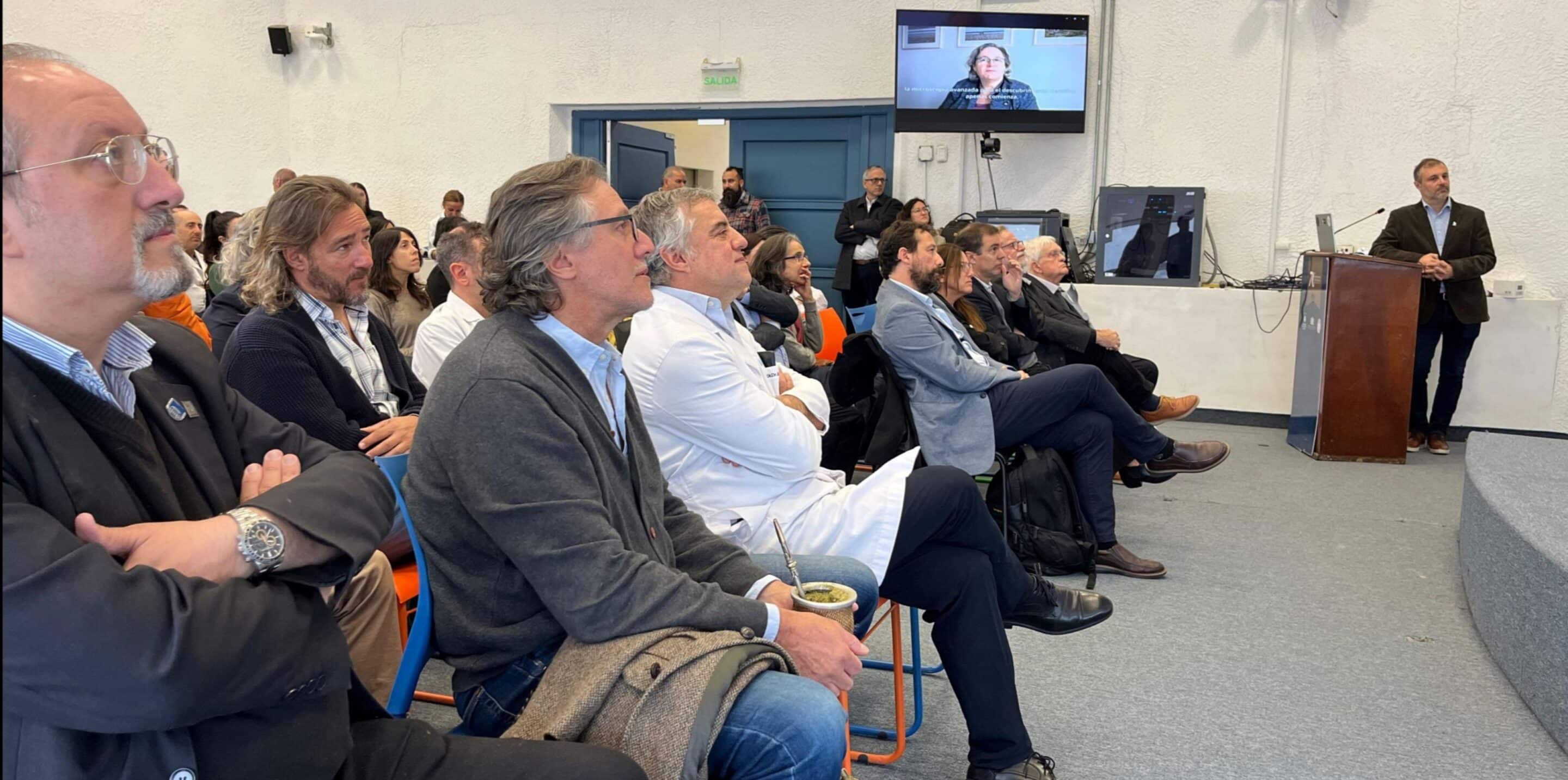In a ceremony attended by around one hundred people—including Álvaro Villar, Director of the Hospital de Clínicas; University of the Republic (Udelar) authorities; and international experts—Leonel Malacrida, head of the Advanced Bioimaging Unit (UBA), presented the new facilities. He showcased the lab’s cutting-edge equipment, outlined the group’s main objectives, and highlighted the services it can provide to both the local and regional communities. He also reviewed the training activities the unit has led, the new technologies they’ve developed, and the projects that have received both national and international support. Malacrida placed particular emphasis on the creation of a regional network of bioimaging specialists and on the ongoing efforts to build a strong community in the field, based on the understanding that the development of microscopy and biophotonics is essential for advancing biological knowledge and tackling medical challenges.
The New UBA Laboratory
Located in Room 6 on the 15th floor of the Hospital de Clínicas, the new UBA space covers approximately 350 m² and is divided into two main areas. The microscopy and image analysis room houses state-of-the-art microscopes (including confocal, two-photon, and time-resolved photon microscopes, as well as fiber-optic-based custom-designed devices), along with high-performance computing stations for advanced image processing and analysis.
The lab also includes office spaces and areas for sample preparation, such as cell culture and pathology, allowing the unit to host visiting researchers and interns from both Uruguay and abroad who need to carry out projects using UBA’s technologies. This new facility complements the laboratory that has been operating at the Institut Pasteur de Montevideo since 2020 and strengthens UBA’s position as a regional leader in the development and innovation of bioimaging technologies, as well as in training and knowledge dissemination that support groundbreaking scientific discoveries.
In an interview with Informativo Uruguay on Radio Uruguay—one of several media appearances following the inauguration—Malacrida explained the many applications of bioimaging-based technologies. “In cancer diagnostics, or when a tumor is removed during surgery, a pathology analysis is needed. That usually involves staining the tissue so that a pathologist can examine it. This relies heavily on the experience and the trained eye of the specialist, and is essentially a qualitative assessment,” he explained. “The technologies we’re developing at UBA allow us to analyze the molecular composition of cells to quantify the presence of tumors, extract measurable data, and reduce the risk of human error as much as possible,” he added. The full interview is available here.


